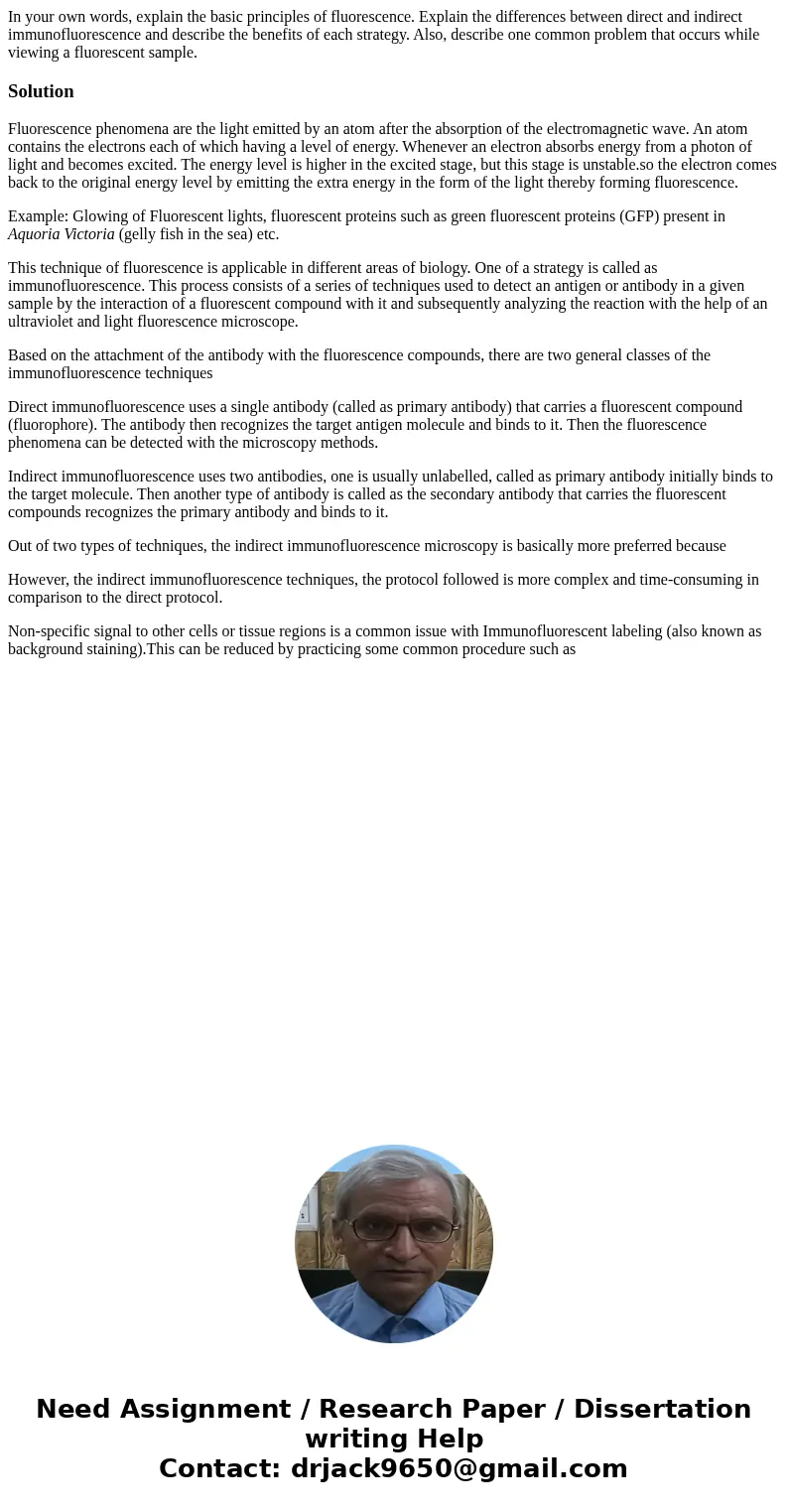In your own words explain the basic principles of fluorescen
In your own words, explain the basic principles of fluorescence. Explain the differences between direct and indirect immunofluorescence and describe the benefits of each strategy. Also, describe one common problem that occurs while viewing a fluorescent sample.
Solution
Fluorescence phenomena are the light emitted by an atom after the absorption of the electromagnetic wave. An atom contains the electrons each of which having a level of energy. Whenever an electron absorbs energy from a photon of light and becomes excited. The energy level is higher in the excited stage, but this stage is unstable.so the electron comes back to the original energy level by emitting the extra energy in the form of the light thereby forming fluorescence.
Example: Glowing of Fluorescent lights, fluorescent proteins such as green fluorescent proteins (GFP) present in Aquoria Victoria (gelly fish in the sea) etc.
This technique of fluorescence is applicable in different areas of biology. One of a strategy is called as immunofluorescence. This process consists of a series of techniques used to detect an antigen or antibody in a given sample by the interaction of a fluorescent compound with it and subsequently analyzing the reaction with the help of an ultraviolet and light fluorescence microscope.
Based on the attachment of the antibody with the fluorescence compounds, there are two general classes of the immunofluorescence techniques
Direct immunofluorescence uses a single antibody (called as primary antibody) that carries a fluorescent compound (fluorophore). The antibody then recognizes the target antigen molecule and binds to it. Then the fluorescence phenomena can be detected with the microscopy methods.
Indirect immunofluorescence uses two antibodies, one is usually unlabelled, called as primary antibody initially binds to the target molecule. Then another type of antibody is called as the secondary antibody that carries the fluorescent compounds recognizes the primary antibody and binds to it.
Out of two types of techniques, the indirect immunofluorescence microscopy is basically more preferred because
However, the indirect immunofluorescence techniques, the protocol followed is more complex and time-consuming in comparison to the direct protocol.
Non-specific signal to other cells or tissue regions is a common issue with Immunofluorescent labeling (also known as background staining).This can be reduced by practicing some common procedure such as

 Homework Sourse
Homework Sourse